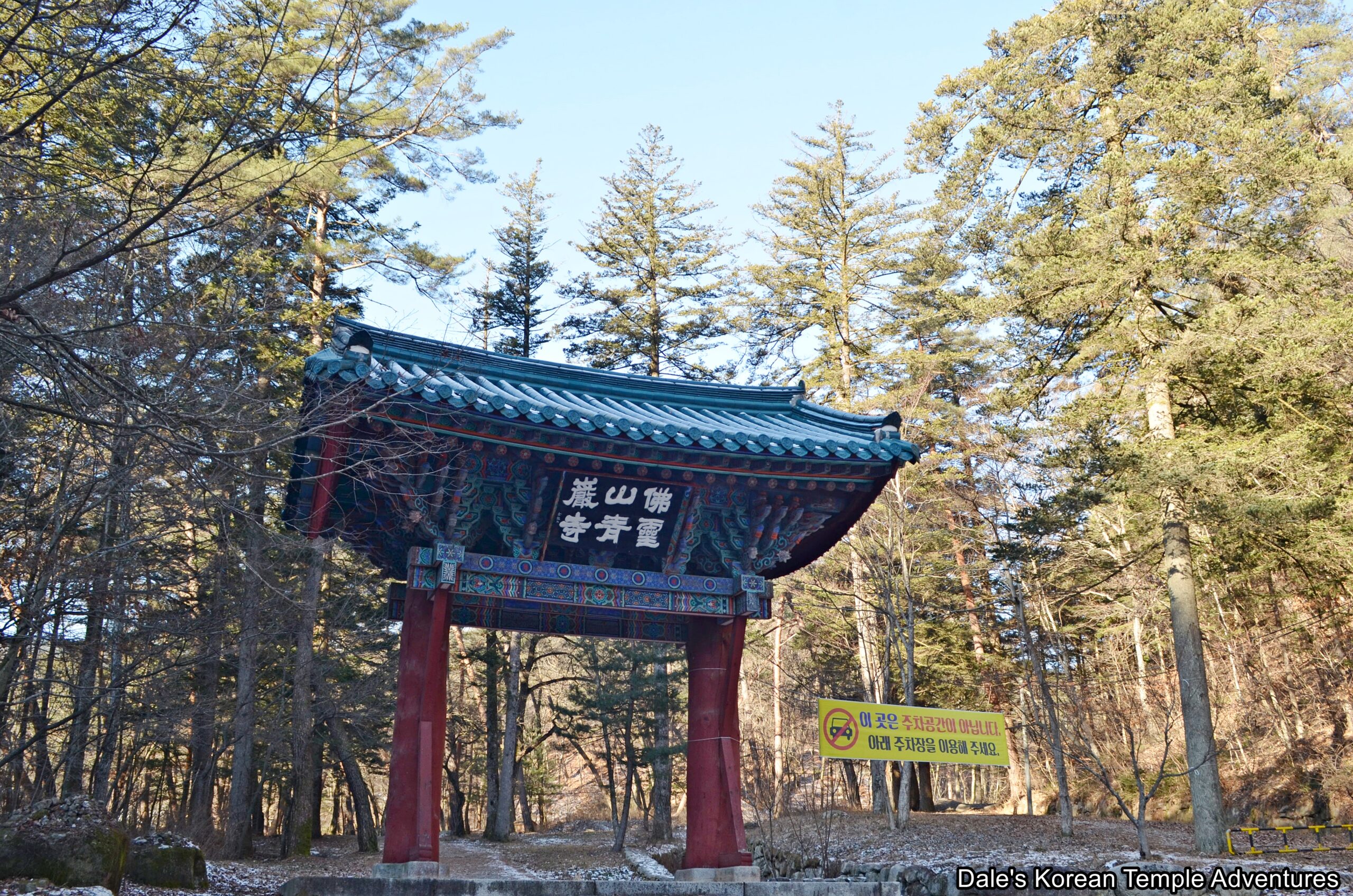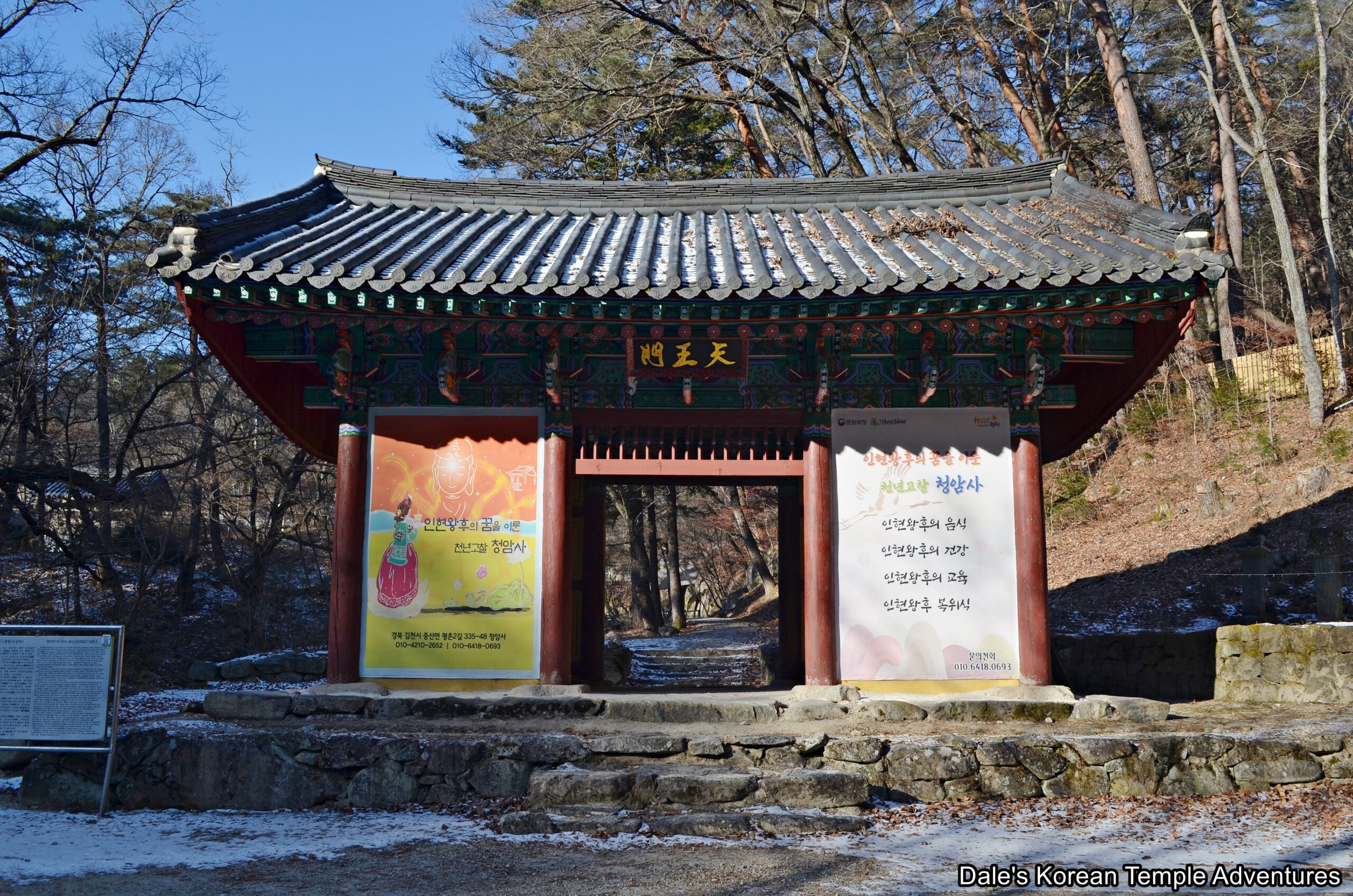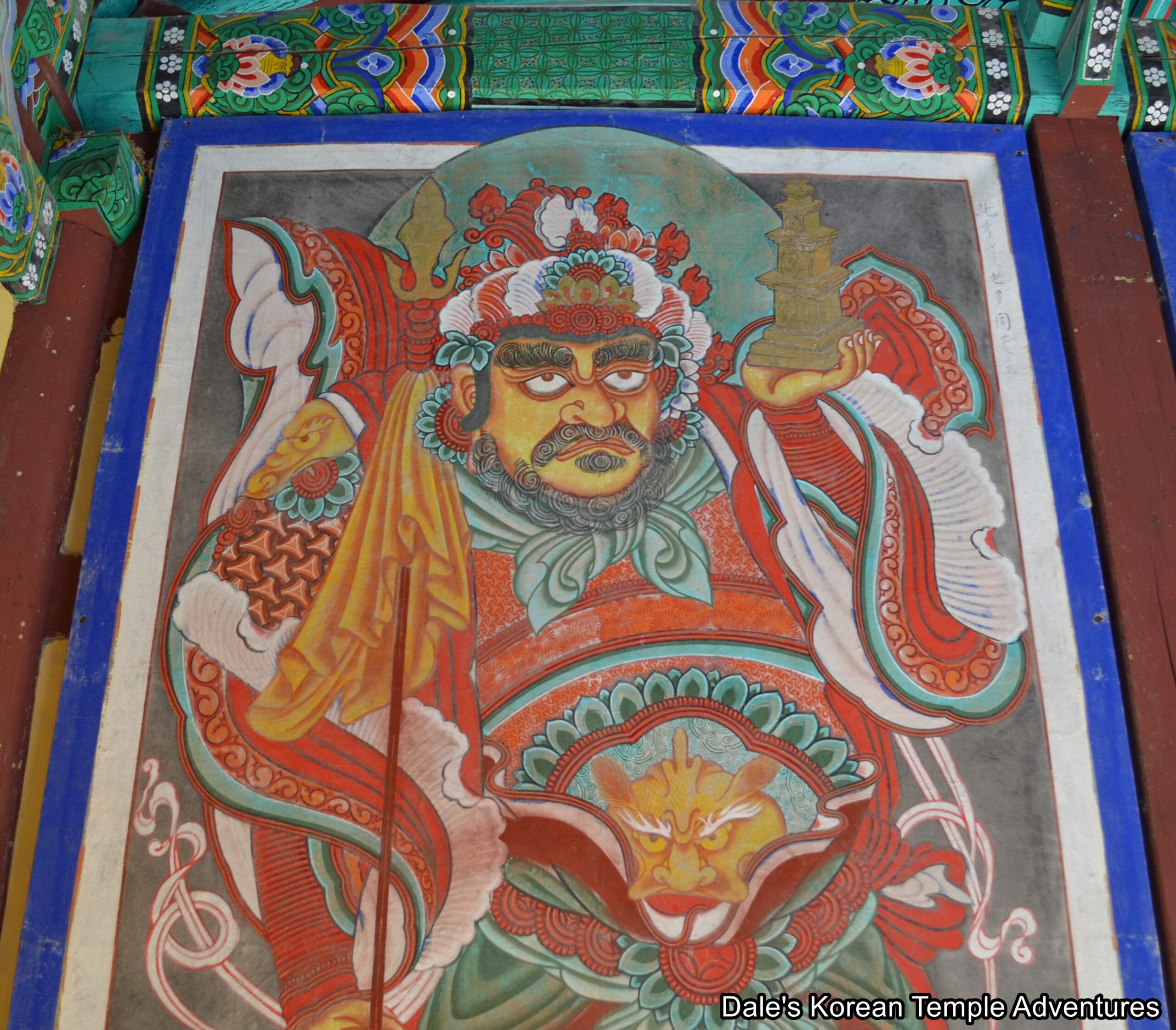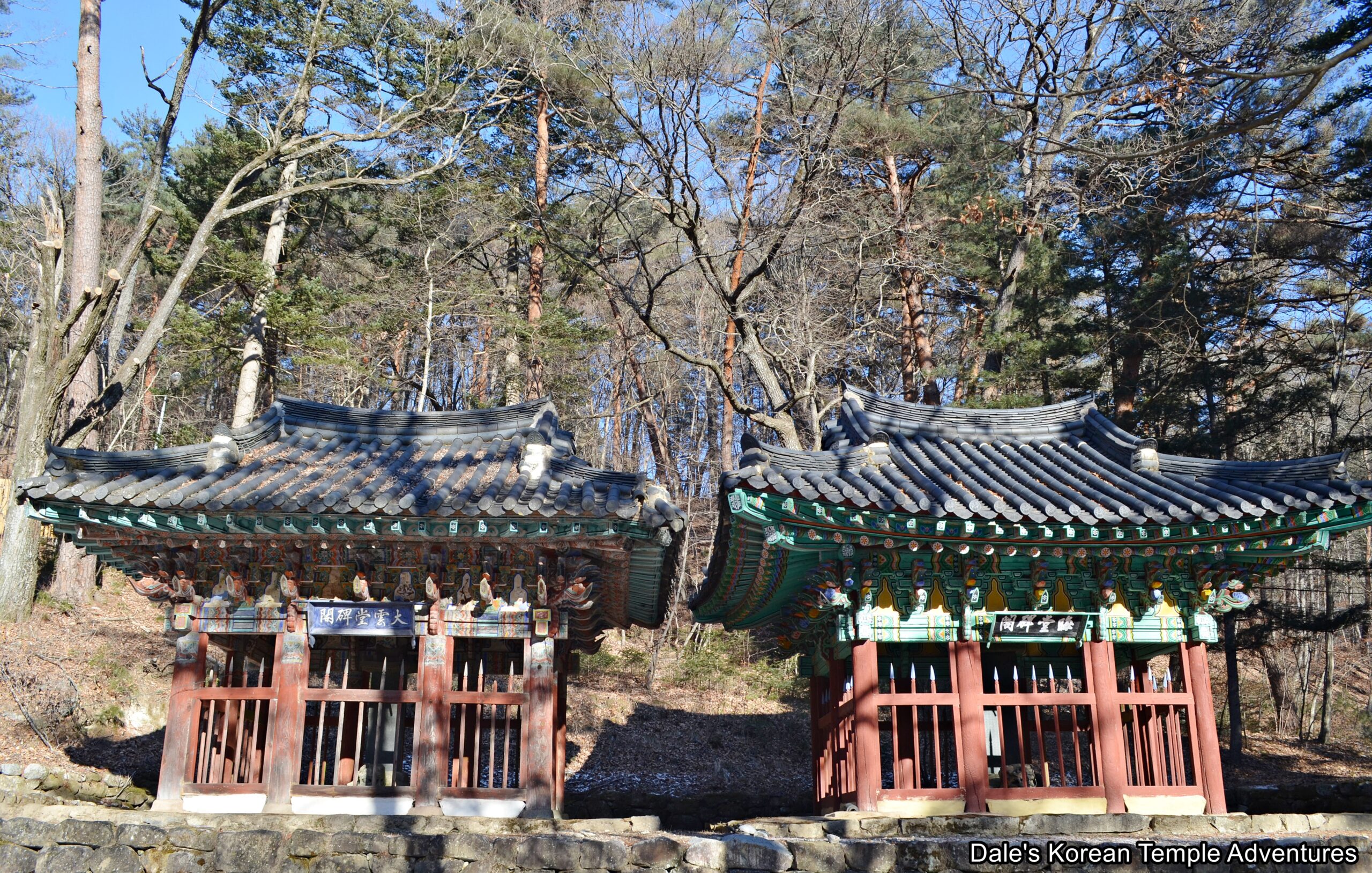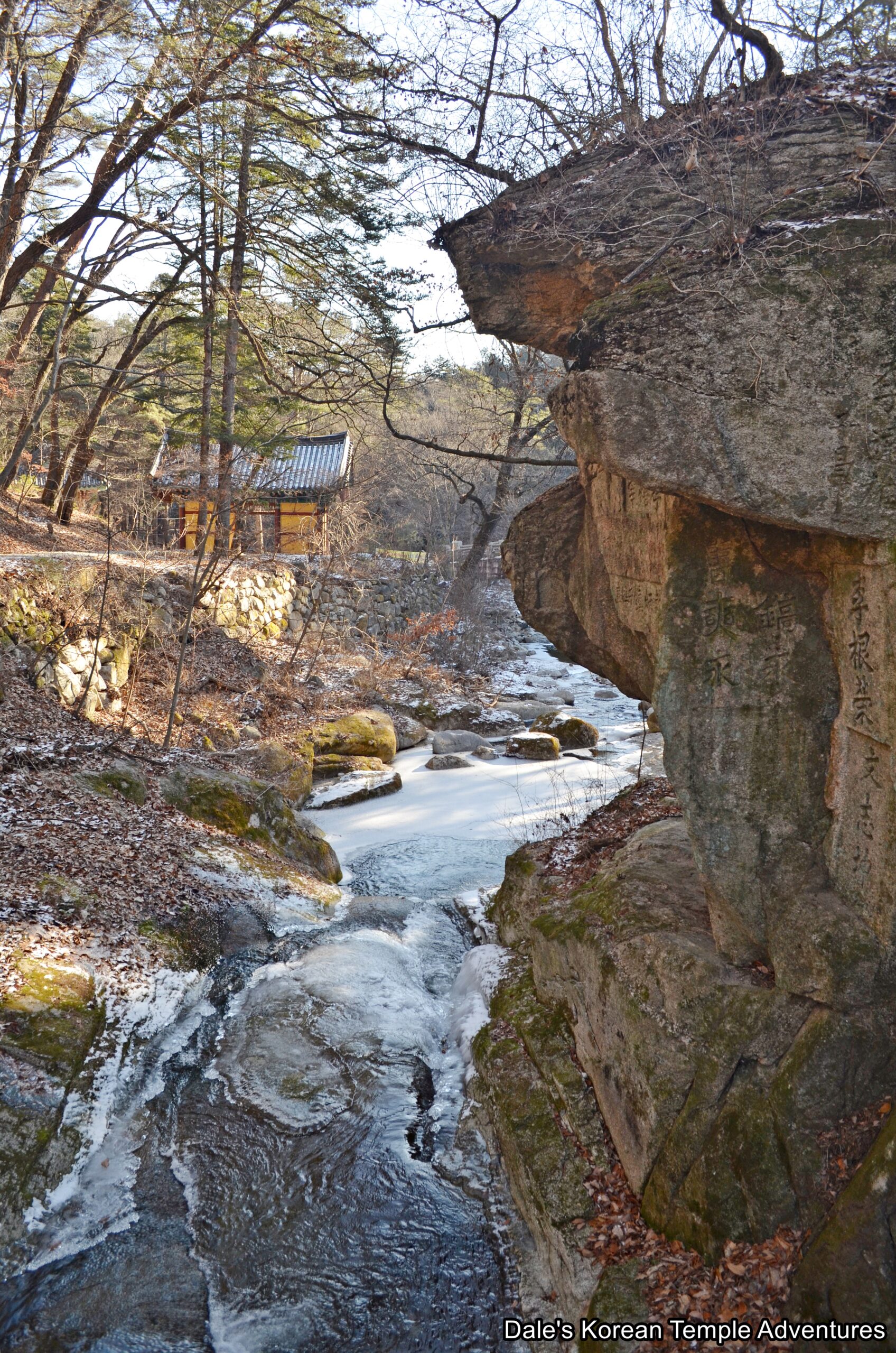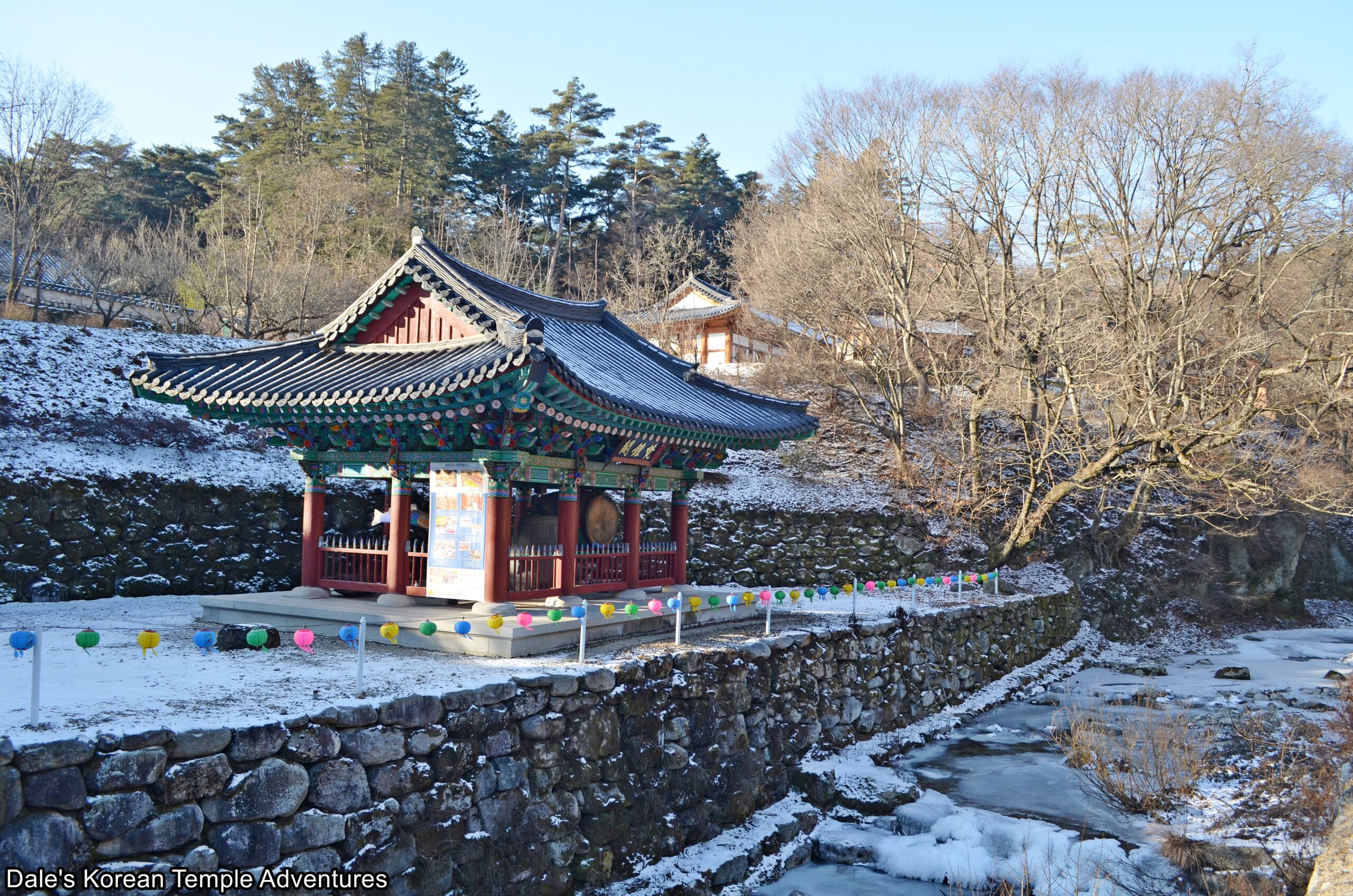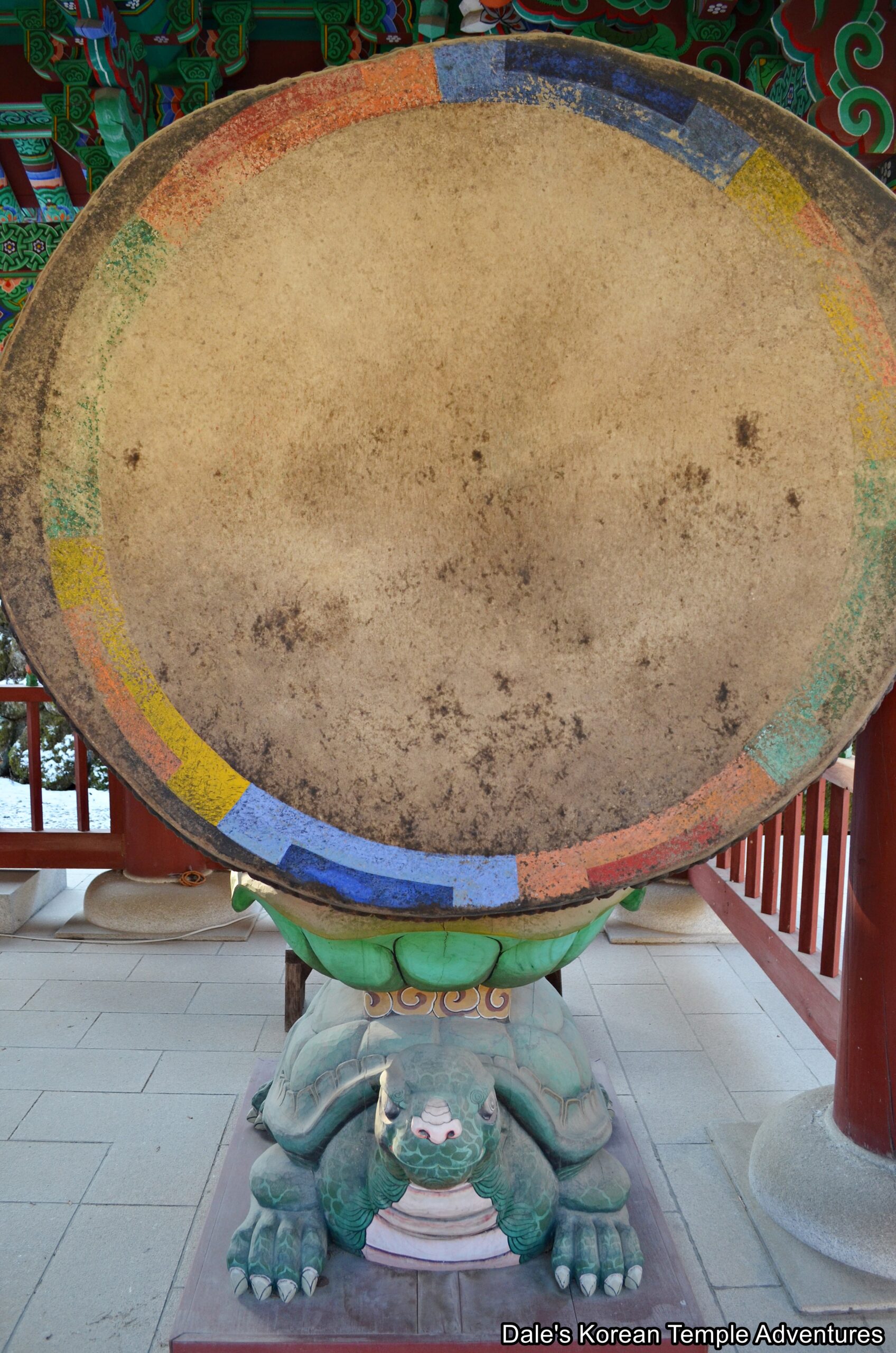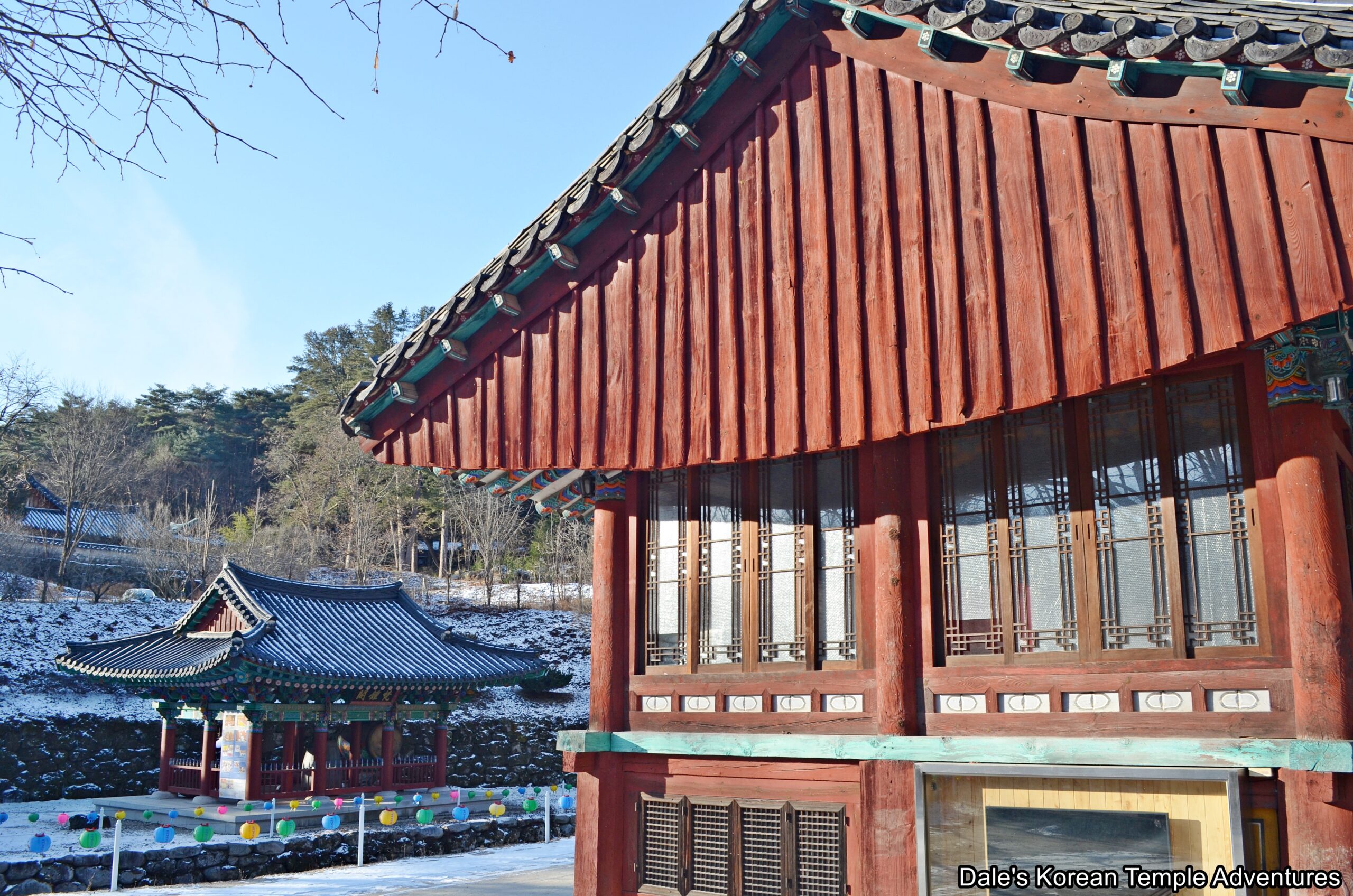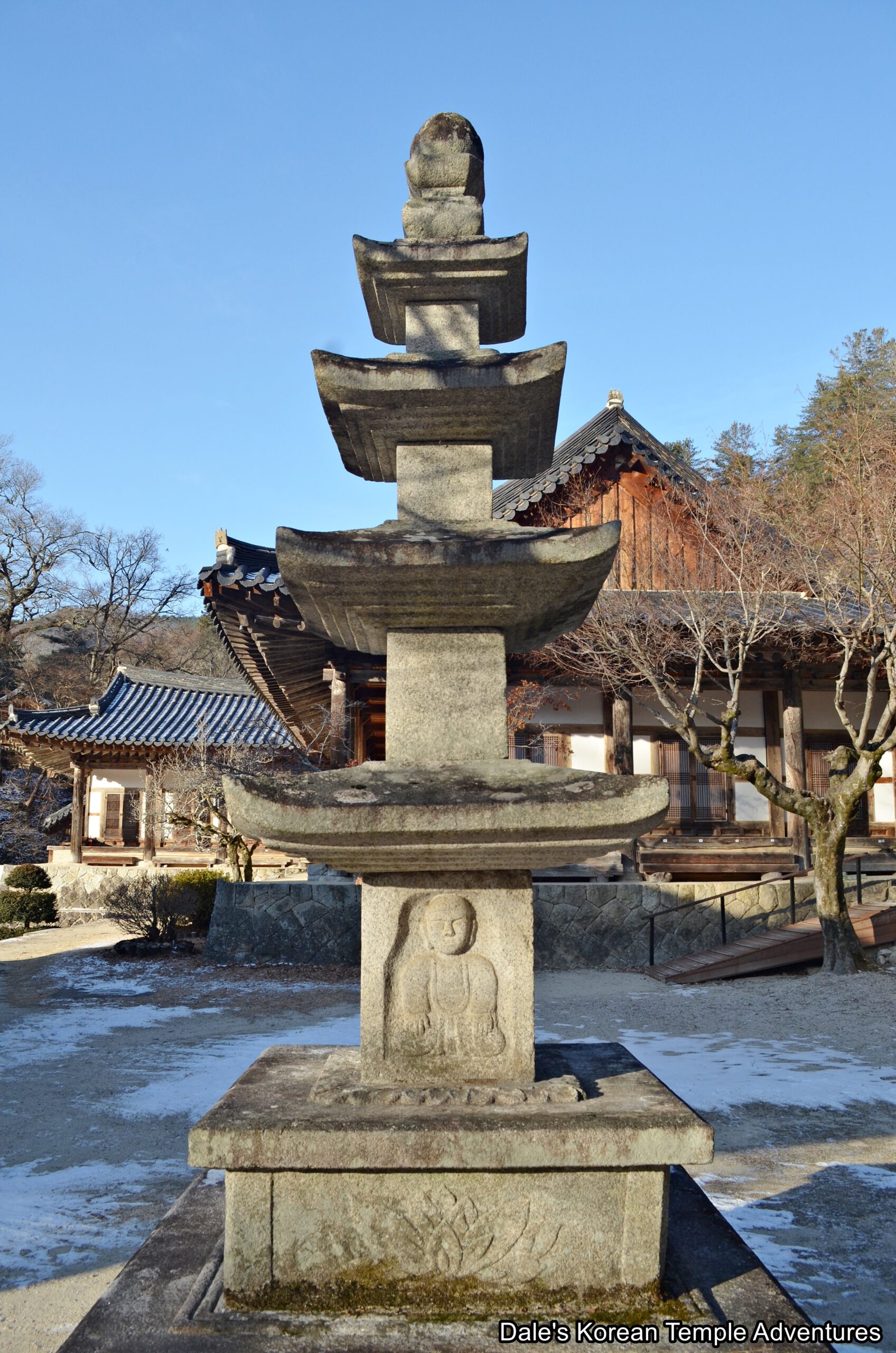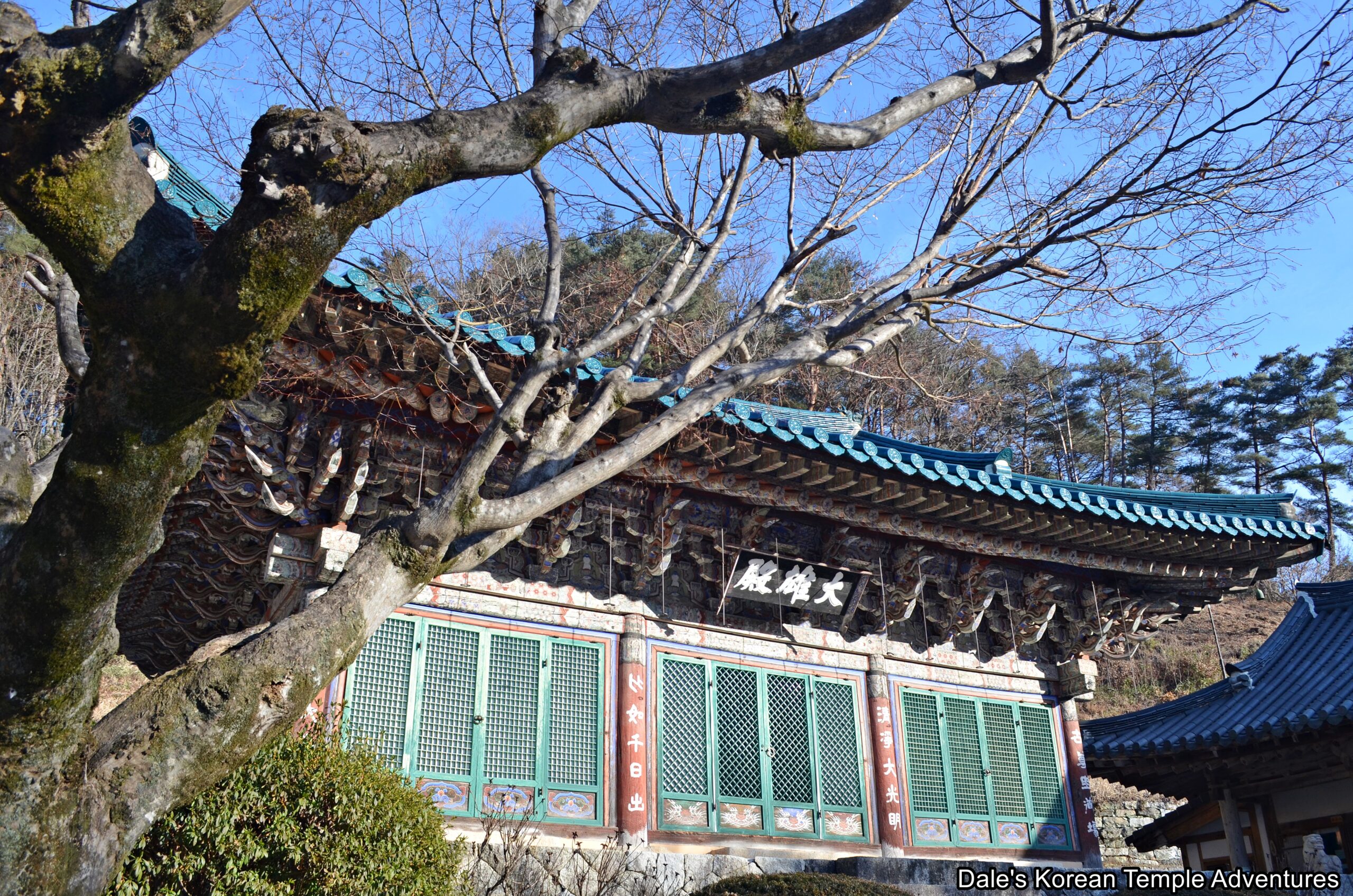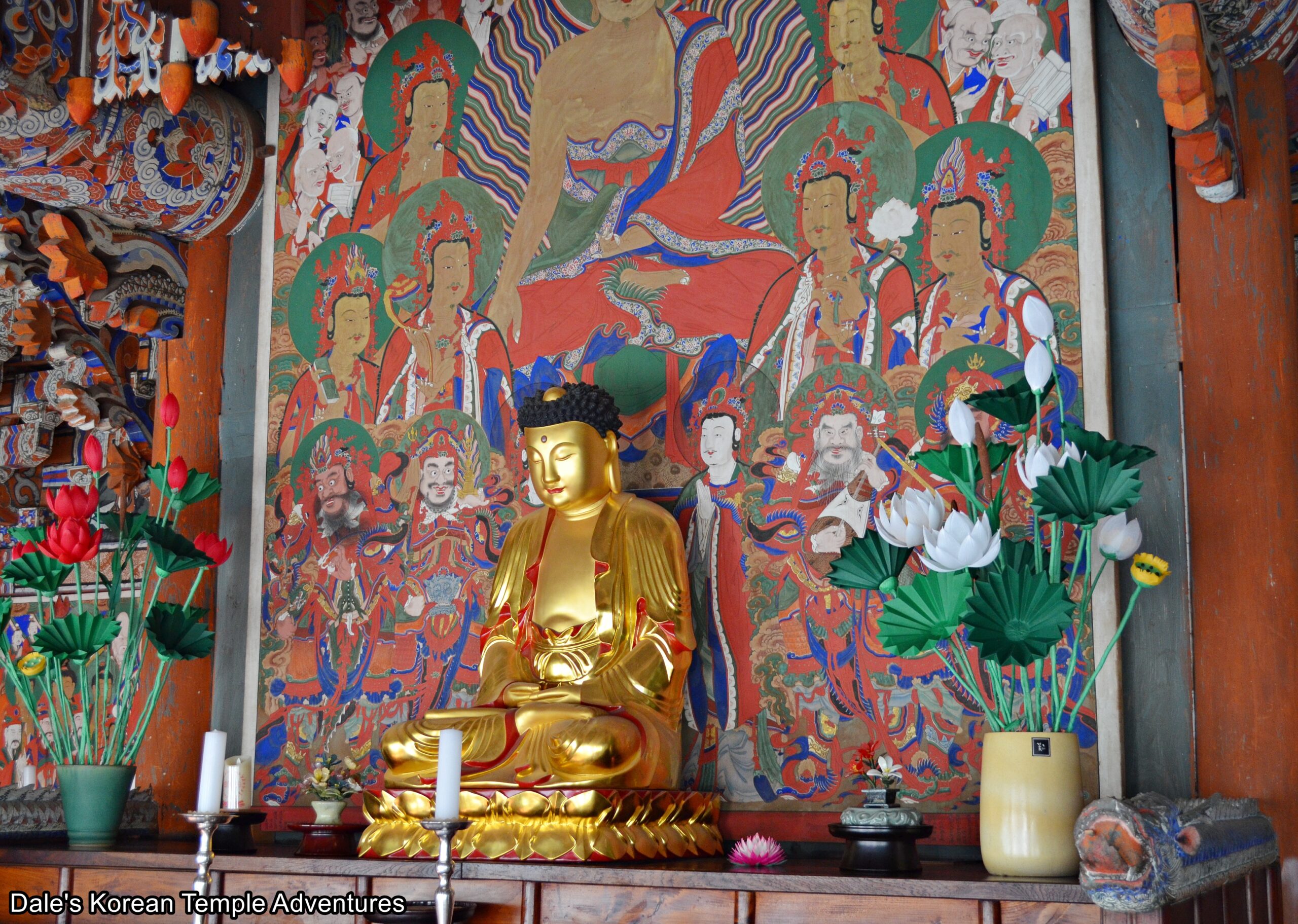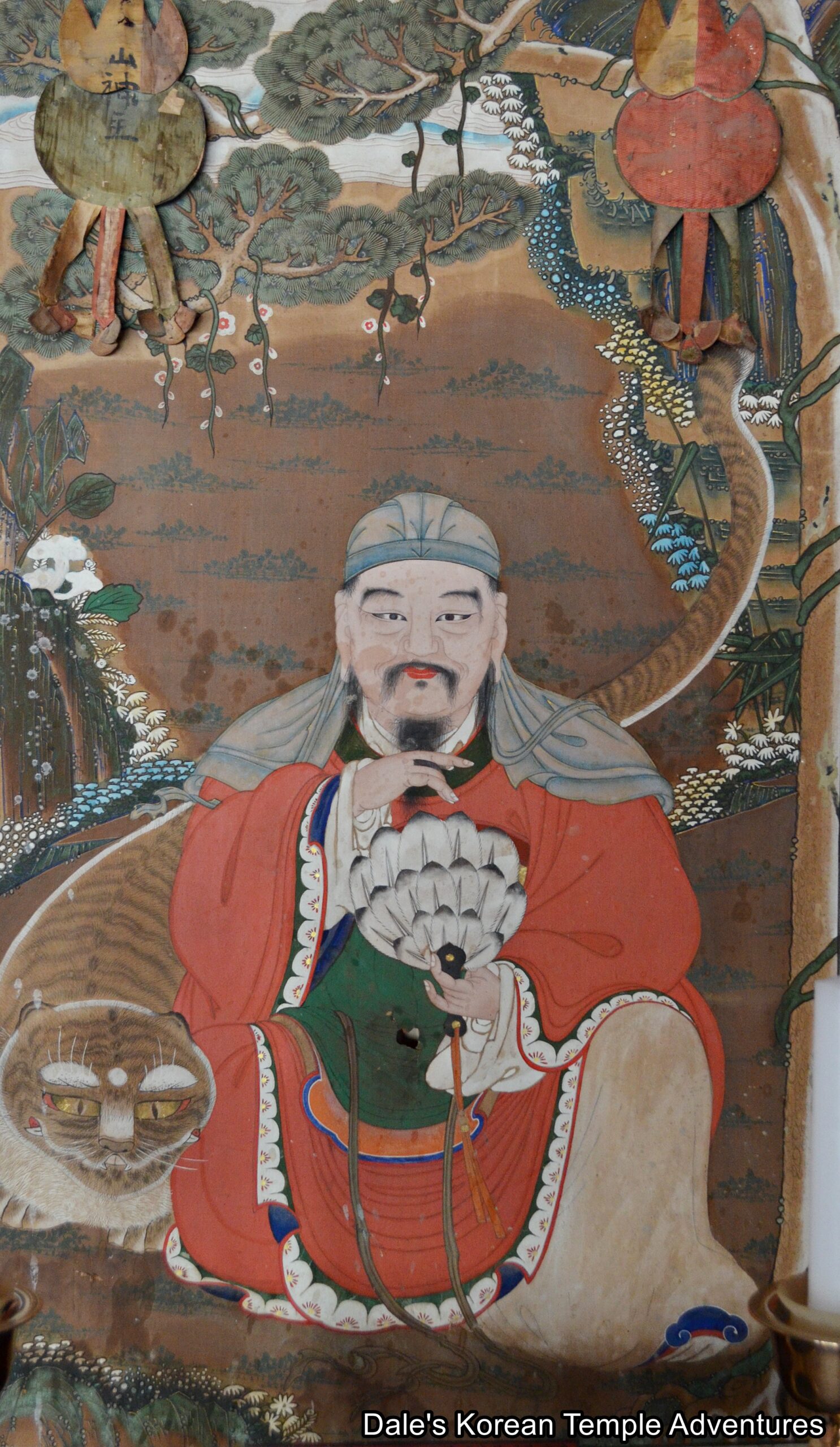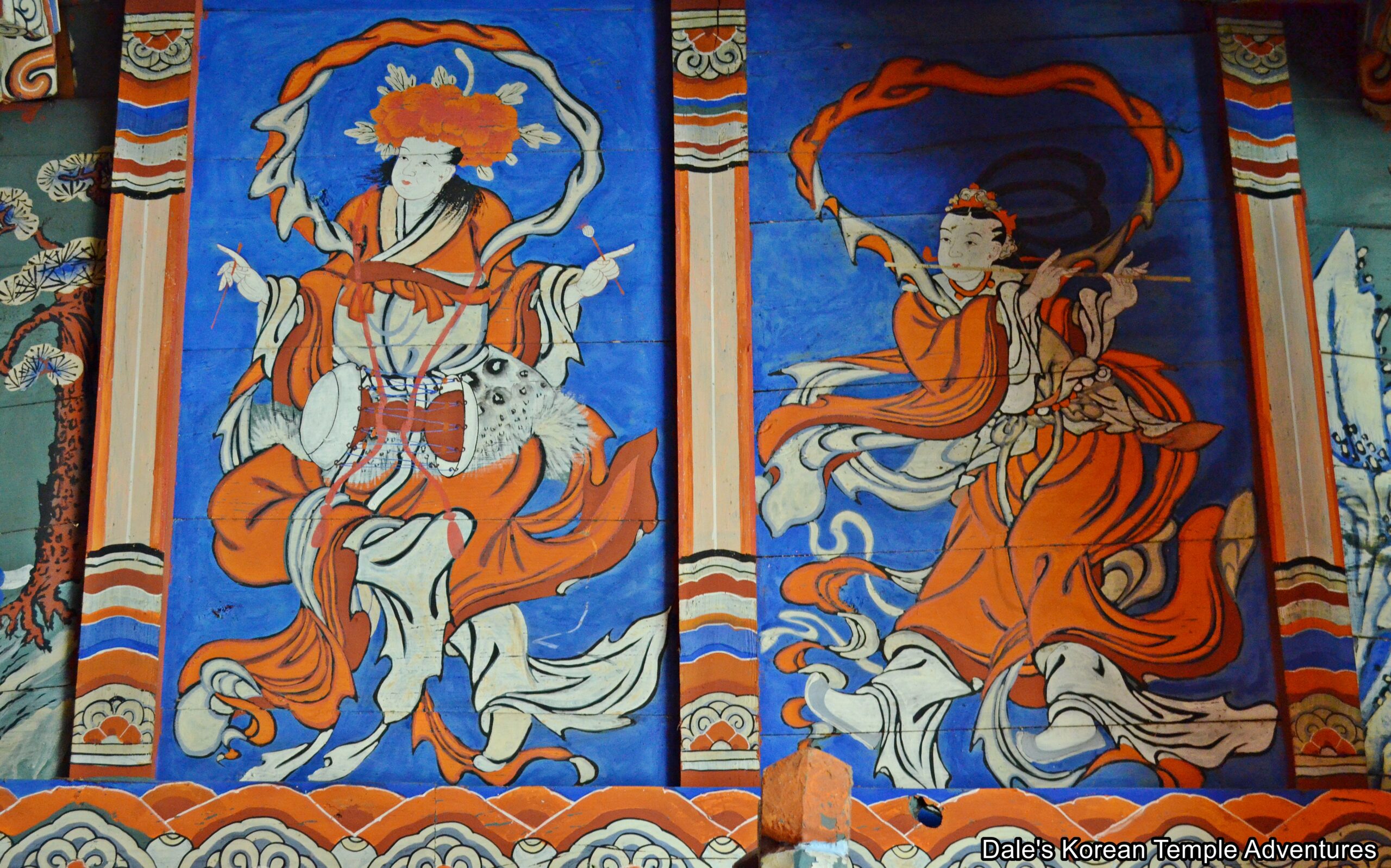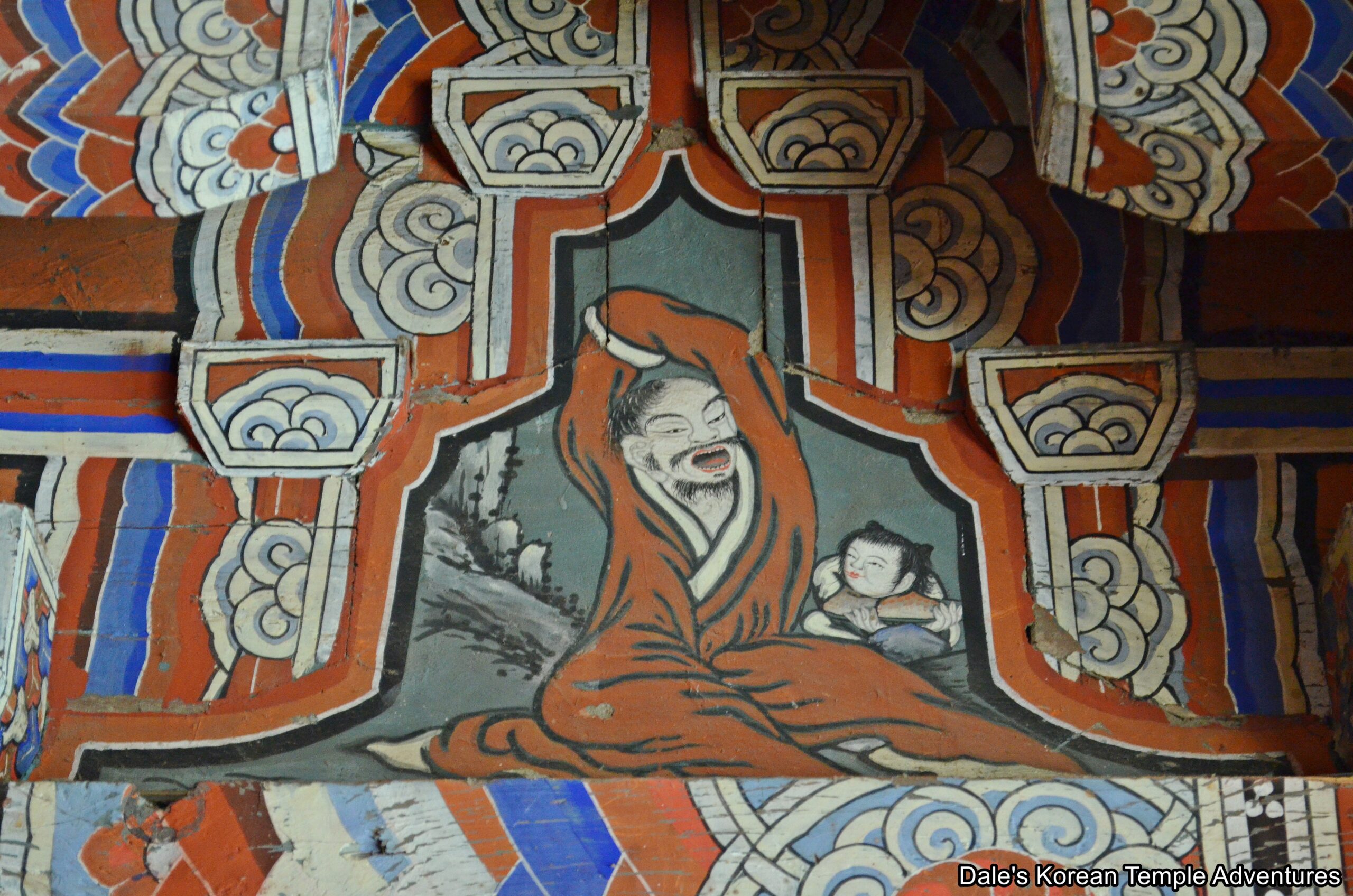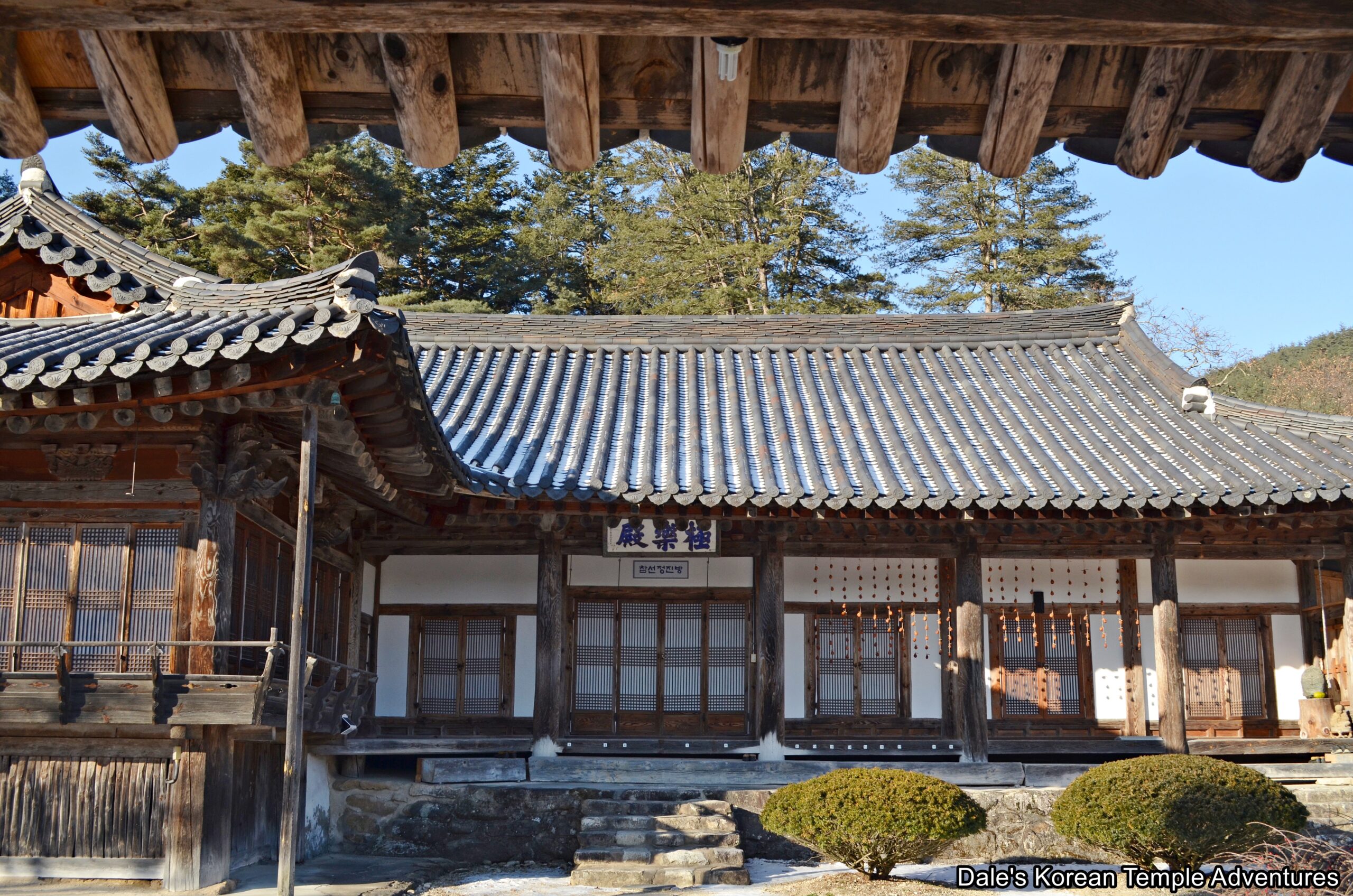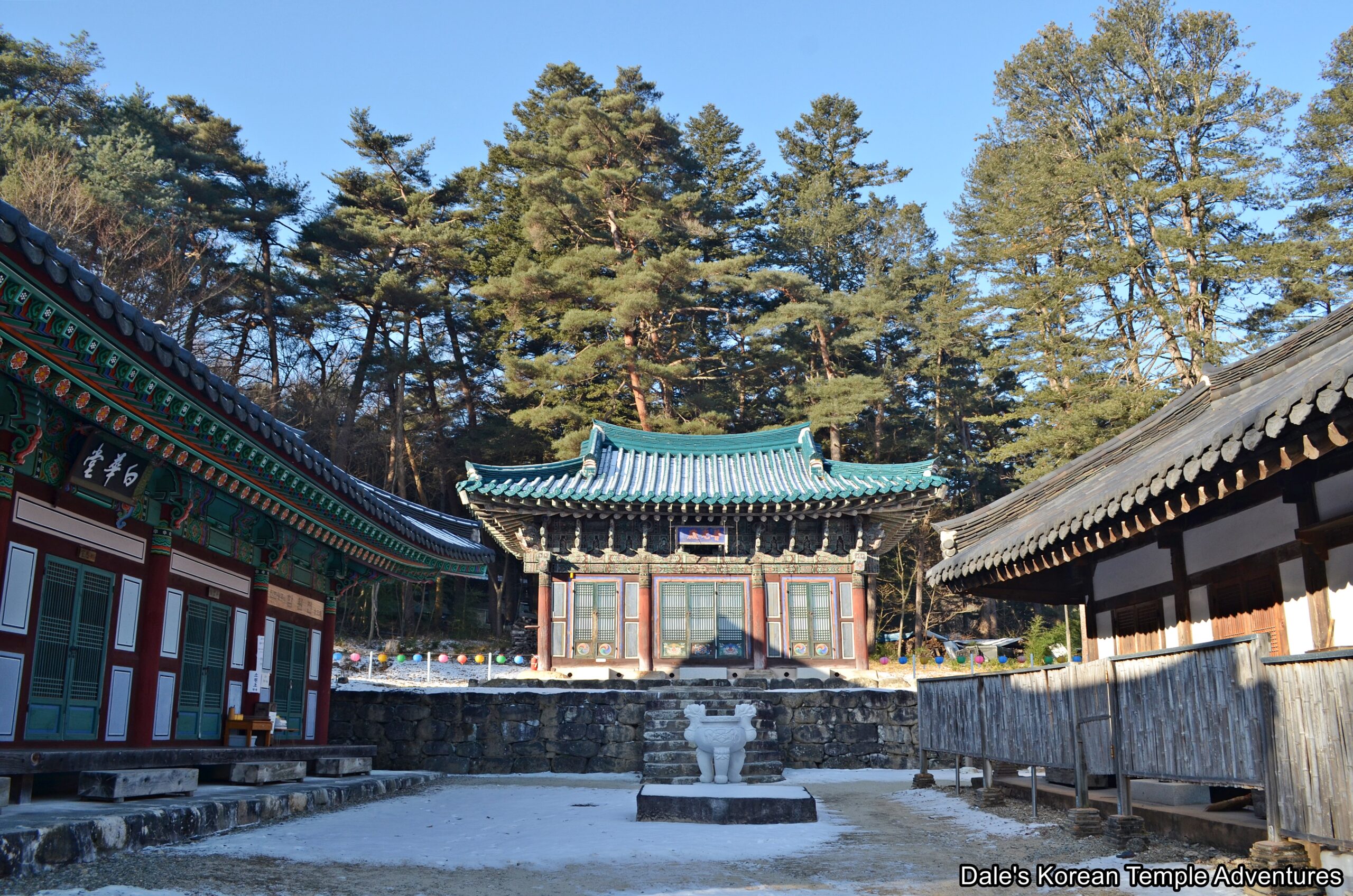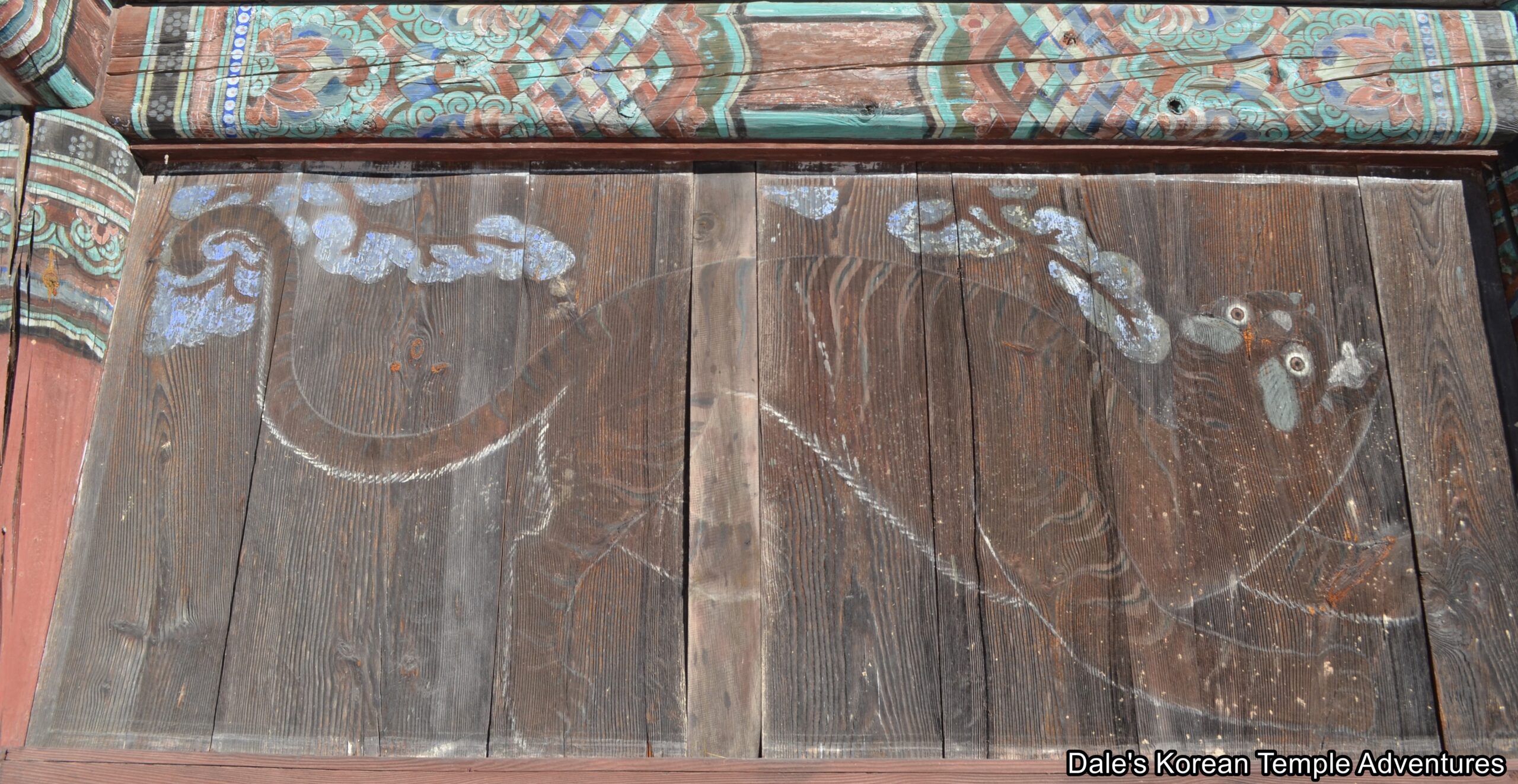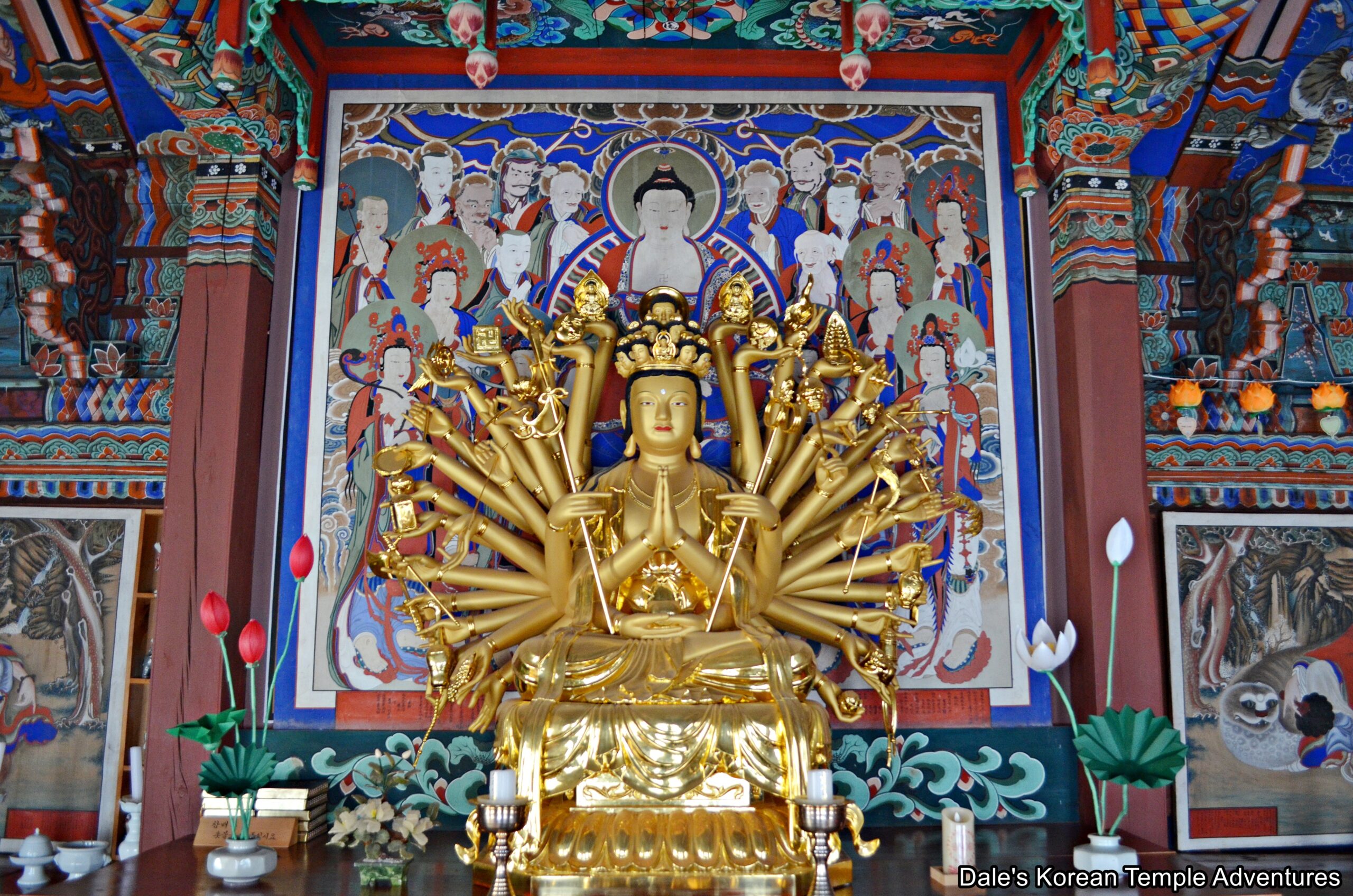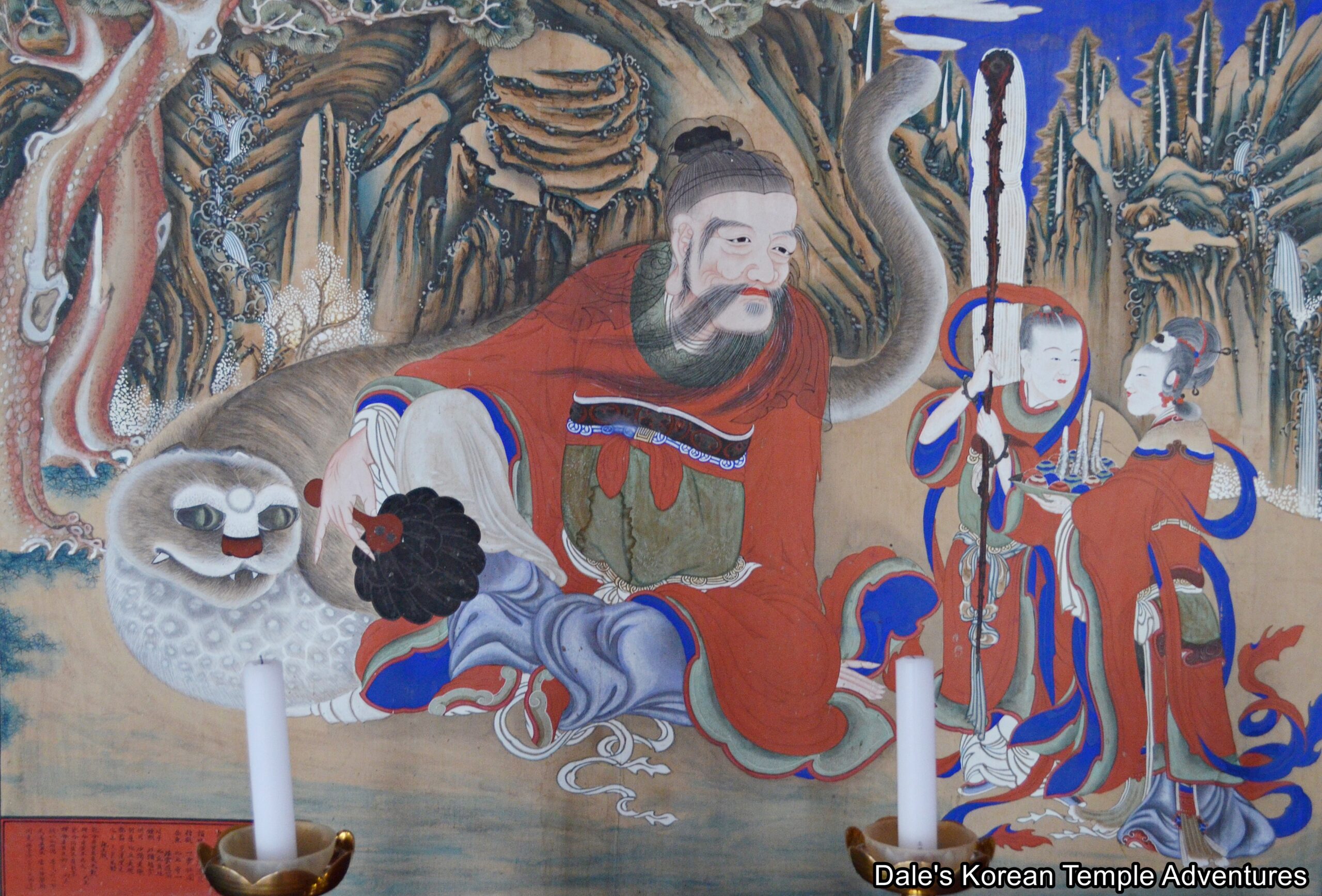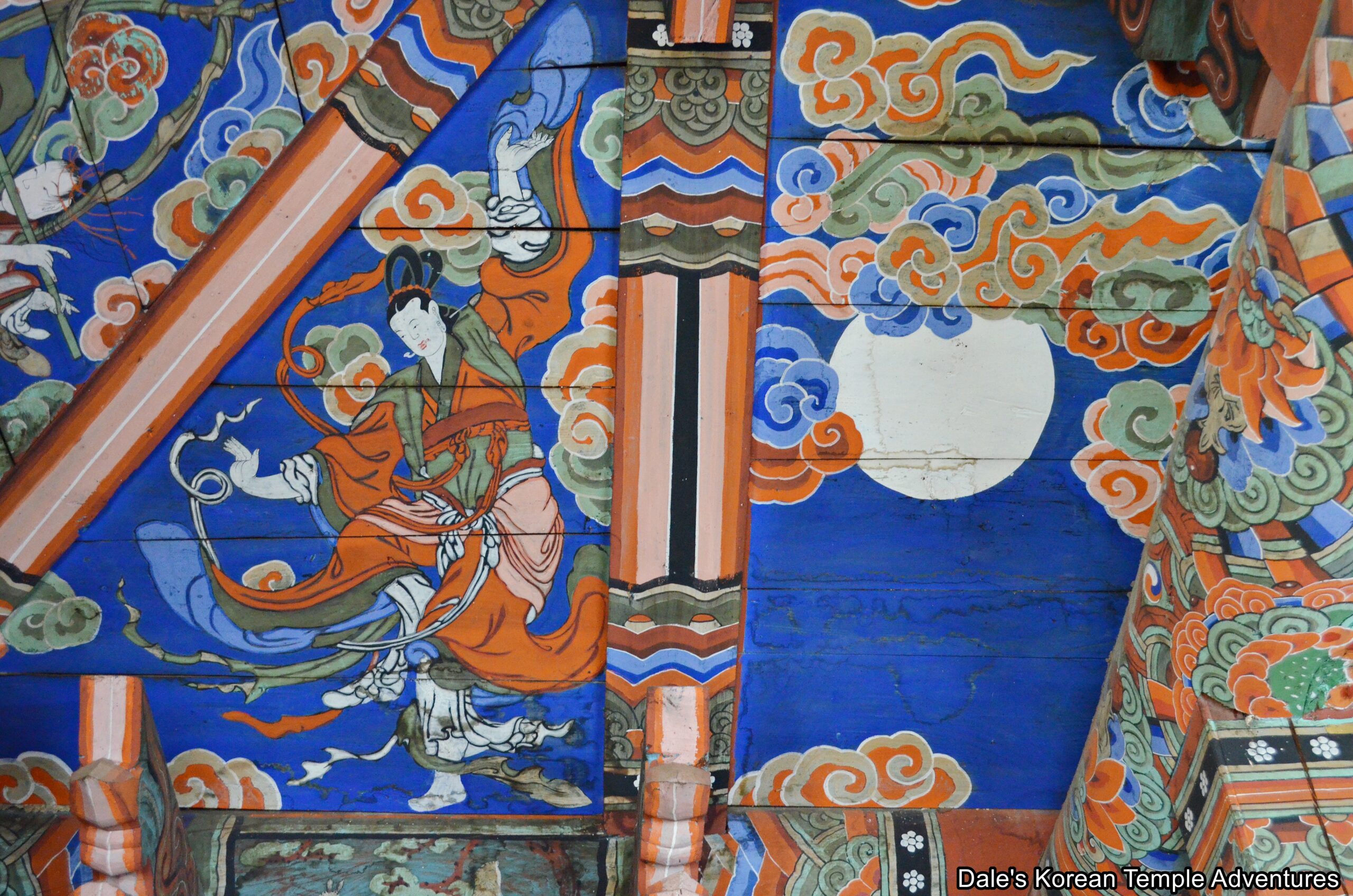Cheongamsa Temple – 청암사 (Gimcheon, Gyeongsangbuk-do)
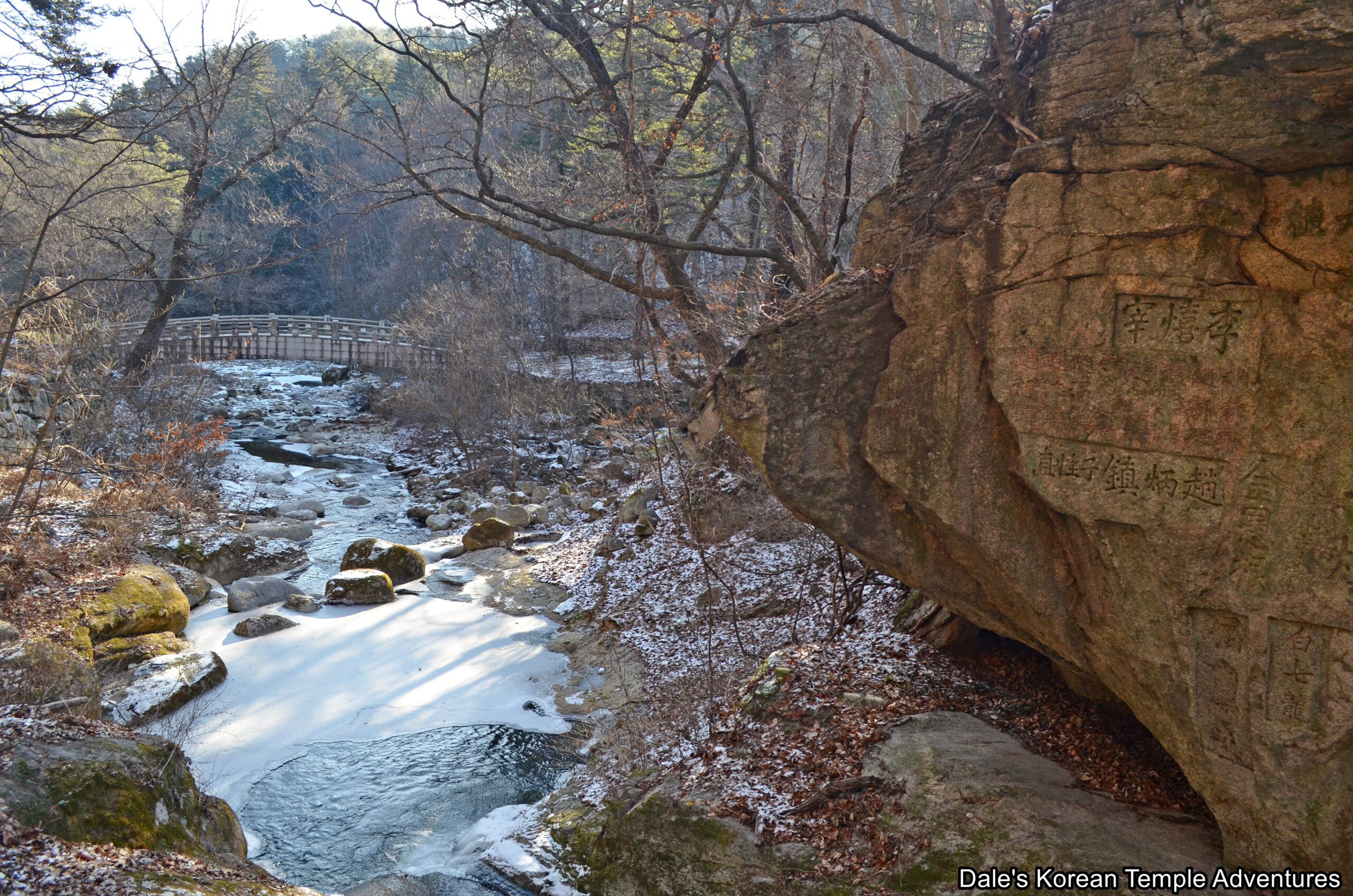
Temple History
Cheongamsa Temple is located in southern Gimcheon, Gyeongsangbuk-do to the north of Mt. Sudosan (1,317.3 m). The story of Cheongamsa Temple is one of being built, destroyed, and being rebuilt, once more. In total, Cheongamsa Temple was rebuilt a total of five times. The temple was first established in 859 A.D. by the famed monk Doseon-guksa (826-898 A.D.). Little is known about Cheongamsa Temple during the Goryeo Dynasty (918-1392) and the early part of the Joseon Dynasty (1392-1910). In 1647, the temple was completely destroyed by fire. The temple was later reconstructed by the monks Heojeong-hwasang and Hwanu-daesa. After Cheongamsa Temple was reconstructed, it was nothing more than a small hermitage that fell under the direct administration of Ssanggyesa Temple.
Unfortunately, the temple would be destroyed, once more, by fire in April, 1782. Cheongamsa Temple would be reconstructed some twenty years later by the monk Hwanu. The temple would close in 1897, but it would be rebuilt over several years by the monk Daeun. Eventually, the temple would be re-opened in 1904. The reconstruction cost of the temple was contributed by Song Seol-dang (1855-1939), who was also the founder of the Gimcheon Middle and High School. The temple would be destroyed by fire in 1911, and it was restored the next year, once more, by the monk Daeun.
In the early 1900s, the Geukrak-jeon Hall was built. Then in the spring of 1912, the Bogwang-jeon Hall was completed. It was also at this time that the multi-armed and headed statue of Gwanseeum-bosal (The Bodhisattva of Compassion) was housed inside the shrine hall. And from 1987 to 2005, Cheongamsa Temple continued to be reconstructed and rebuilt to appear as it does now.
In 1987, Cheongamsa Temple established the Sungga-daehakgyo (Buddhist Women’s College for the training of female monks). The college program is a four year program. There are two hermitages directly associated with Cheongamsa Temple. They are the famed Sudoam Hermitage, which was also founded by Doseon-guksa, and Baekryeonam Hermitage, which was founded in 1900.
Temple Layout
As you first near the temple grounds, you’ll be welcomed by the Iljumun Gate. This stately entry gate has a signboard on it that reads “Cheongamsa Temple Bulyeongsan” on it. Obviously, the sign indicates the name of the temple, while also referencing the other name to the mountain where the temple is located. Mt. Bulyeongsan means “Buddha Spirit Mountain” in English.
A little further up the trail, and you’ll come to a clearing that houses both the Cheonwangmun Gate and a collection of biseok (stele). The first of the two biseok are housed inside protective pavilions. The stele on the right is dedicated to Huidang, while the biseok to the left is dedicated to Daeun. And to the left of these pavilions are a row of five unsheltered biseok. As for the Cheonwangmun Gate, you’ll find four beautiful paintings dedicated to the Four Heavenly Kings inside it.
A little further up the trail, but before making your way across the wooden bridge, you’ll find a large collection of ancient graffiti carved across the face of the numerous boulders. The combination of ancient graffiti, the meandering stream, and the wooden bridge make for a beautiful view. It’s also in this area that you’ll find a small spring named Ubicheon. Supposedly, and according to the geomantic principles for which Doseon-guksa, the founder of Cheongamsa Temple, was renowned, the temple site is extremely auspicious and thought to appear like a cow lying down. This spring is thought to represent the cow’s nose. The nose of a healthy cow is constantly wet; and likewise, the temple and the nation would always prosper as long as the Ubicheon flowed steadily. Conversely, in times of national crisis, the spring is said to dry up.
Continuing up the pathway, you’ll come to a compound divided by the stream. Rather uniquely, Cheongamsa Temple is divided into two major courtyards. The first of these courtyards is situated to the north of the stream. Before crossing the Geukrak-gyo Bridge, you’ll find the beautiful Jong-ru Pavilion. Housed inside this pavilion are the four traditional percussion instruments. The first of these four percussion instruments is the blue Mokeo (Wooden Fish Drum), which has its mouth wide open. In front of this is a modern-looking Unpan (Cloud Plate Drum). The surface of this plate drum is adorned with a vibrant metal relief of the sun and the moon. And next to this is the large temple bronze bell that’s crowned by a statue of Poroe (The Dragon that Adorns the Top of the Temple Bell). And finally, you’ll see the Beopgo (Dharma Drum). This large drums rests atop a realistic wooden statue of a green turtle. All four percussion instruments are masterful.
Finally crossing the bridge, you’ll find the large Manse-ru Pavilion. To the left and right of this large entry gate, which also acts as a place for large dharma talks, are a collection of buildings. These buildings are the Yosachae (monks’ dorms), administrative offices, and the kitchen facilities. And to the far left, you’ll find the Nambyeol-dang Hall, which is where Queen Inhyeon (1667-1701) lived after being stripped of her royal title in 1689. The building features a traditional style similar to palace architecture in deference to the queen’s fate. Queen Inhyeon would eventually be re-instated as the queen in 1694. Now the building that once housed Queen Inhyeon during her exile is used as the temple’s college.
But it’s directly behind the Manse-ru Pavilion that you’ll find the beautiful Daeung-jeon Hall. Out in front of the Daeung-jeon Hall is the “Multi-Storied Stone Pagoda of Cheongamsa Temple,” which is also a Gyeongsangbuk-do Cultural Property Material. This slender pagoda stands 4.21 metres in height and was moved from the neighbouring city of Seongju, Gyeongsangbuk-do to its present location in 1917. The architectural style of the pagoda appears to date back to the late Joseon Dynasty. Originally, the pagoda had five stories; but now, only four of the original five stories still remain. The pagoda seems somewhat unbalanced because of its wide base and narrow body stones. Adorning the base of the pagoda on all four sides is a lotus relief design. And the first body stone of the pagoda is adorned with a relief of the Buddha on all four of its sides, as well.
As for the Daeung-jeon Hall, the exterior walls are adorned with various Buddhist-related murals. These masterful murals include images of Munsu-bosal (The Bodhisattva of Wisdom) riding a blue haetae, Bohyeon-bosal (The Bodhisattva of Power) riding a white elephant, various guardians striking menacing poses, as well as a collection of various Bodhisattvas near the side entries to the main hall.
Stepping inside the Daeung-jeon Hall, you’ll find a solitary statue of Seokgamoni-bul (The Historical Buddha) resting under an atypical box-like canopy painted in red, blue, and white colours. There are two long, wooden dragons book-ending the main altar that the statue of Seokgamoni-bul rests upon. Looking up at the ceiling of the Daeung-jeon Hall, the red, blue, and white colour motif continues. There are two large, wooden dragons that protectively look down on the main hall from the wooden beams. Adorning every surface of the main hall are images of Bicheon (Flying Heavenly Deities), Nahan (The Historical Disciples of the Buddha), a white rabbit, a white deer, a phoenix, and lotus flower designs. Directly to the right of the main altar is an older Shinjung Taenghwa (Guardian Mural). This painting is joined in this area by a fantastic incarnation of Sanshin (The Mountain Spirit), who is accompanied by a golden-eyed tiger. And to the left of the main altar, you’ll find an equally older image dedicated to Chilseong (The Seven Stars), as well as an impressive image dedicated to Dokseong (The Lonely Saint). In this painting, the mountain stream swirls at his feet, while he contemplatively rests his arm and hand on rock outcroppings.
Recrossing the Geukrak-gyo Bridge, and making your way up an uneven set of stone stairs, you’ll make your way towards the southern courtyard at Cheongamsa Temple that houses both the Geukrak-jeon Hall and the Bogwang-jeon Hall. There is a sign in this area, and it can seem a bit confusing, but follow the arrows on the sign to help direct you. The first of the two shrine halls that you’ll come across is the Geukrak-jeon Hall. Unfortunately, this shrine hall is off-limits to the general public.
Just to the south of the Geukrak-jeon Hall, and book-ended by the outer wall of the Geukrak-jeon Hall to the north and another building to the south, you’ll find the Bogwang-jeon Hall. The Bogwang-jeon Hall was originally built at the time that Queen Inhyeon came to live at Cheongamsa Temple in 1689. Through the years, the shrine hall eventually fell into disrepair. It would be rebuilt in 1905 by the monks Daeun and Eungun. Out in front of the Bogwang-jeon Hall is a beautiful, new incense burner. The entire surface of the incense burner is adorned with reliefs of lotus flowers. As for the Bogwang-jeon Hall, and the front entry doors, you’ll find paintings of tri-coloured taegeuk images, as well as a pair of Gwimyeon (Monster Masks) and a central lotus flower painting. The exterior walls are adorned with various paintings that include one of a blue dragon, a traditional-looking tiger, as well as various images of the Sinseon (Taoist Immortals).
Stepping inside the Bogwang-jeon Hall, you’ll be greeted by the early 20th century statue of Gwanseeum-bosal (The Bodhisattva of Compassion). The somewhat chubby image of Gwanseeum-bosal is both multi-armed and headed. Like the Daeung-jeon Hall, the interior is adorned with the colours of red, blue, and white. Looking up at the ceiling of the shrine hall, you’ll find images of the Sinseon (Taoist Immortals), Bicheon (Flying Heavenly Deities), as well as images of the sun and the moon, which are in deference to the royal family. To the right of the main altar, you’ll find an older Shinjung Taenghwa (Guardian Mural), as well as a wonderful image dedicated to Sanshin (The Mountain Spirit), who looks to be both contemplative and forlorn. And joining Sanshin is a tiger that has demonic eyes. To the left of the main altar are a pair of paintings. The first is an image dedicated to Dokseong (The Lonely Saint). In this painting, Dokseong looks just as forlorn as Sanshin but a little more hopeful. If you look closely at the dongja (attendants), you’ll notice a beautiful collection of tea cups and a tea pot. And hanging on the far left wall is a painting dedicated to Chilseong (The Seven Stars).
How To Get There
From the Gimcheon Intercity Bus Terminal, you can take Bus #86-3 to get to Cheongamsa Temple. In total, you will need to take this bus for 53 stops, which will take 68 minutes, and get off at the “Cheongamsa Stop – 청암사 하차.” From where the bus drops you off, you’ll simply need to walk an additional 200 metres, or 5 minutes, to get to Cheongamsa Temple.
Overall Rating: 8/10
Cheongamsa Temple has this wonderful, remote feel to it. Perhaps it’s the long valley that leads up to it, and perhaps its the geomantic principles of Doseon-guksa at play, but Cheongamsa Temple has this amazing feel to it. Its link to royal history, as well as its natural beauty, add to the temple’s overall appeal. Also of interest is the artwork in and around the Daeung-jeon Hall like the interior paintings, as well as the shaman paintings dedicated to Sanshin and Dokseong inside the main hall. The four traditional percussion instruments inside the Jong-ru Pavilion are masterful, as are the fading murals that adorn the exterior walls of the Bogwang-jeon Hall in the southern courtyard. Also of interest are the shaman murals housed inside this hall, as well. Overall, Cheongamsa Temple presents a beautiful combination of natural and artistic beauty. While rather remote, and somewhat unknown, Cheongamsa Temple is a wonderful example of a temple at its solemn best.
